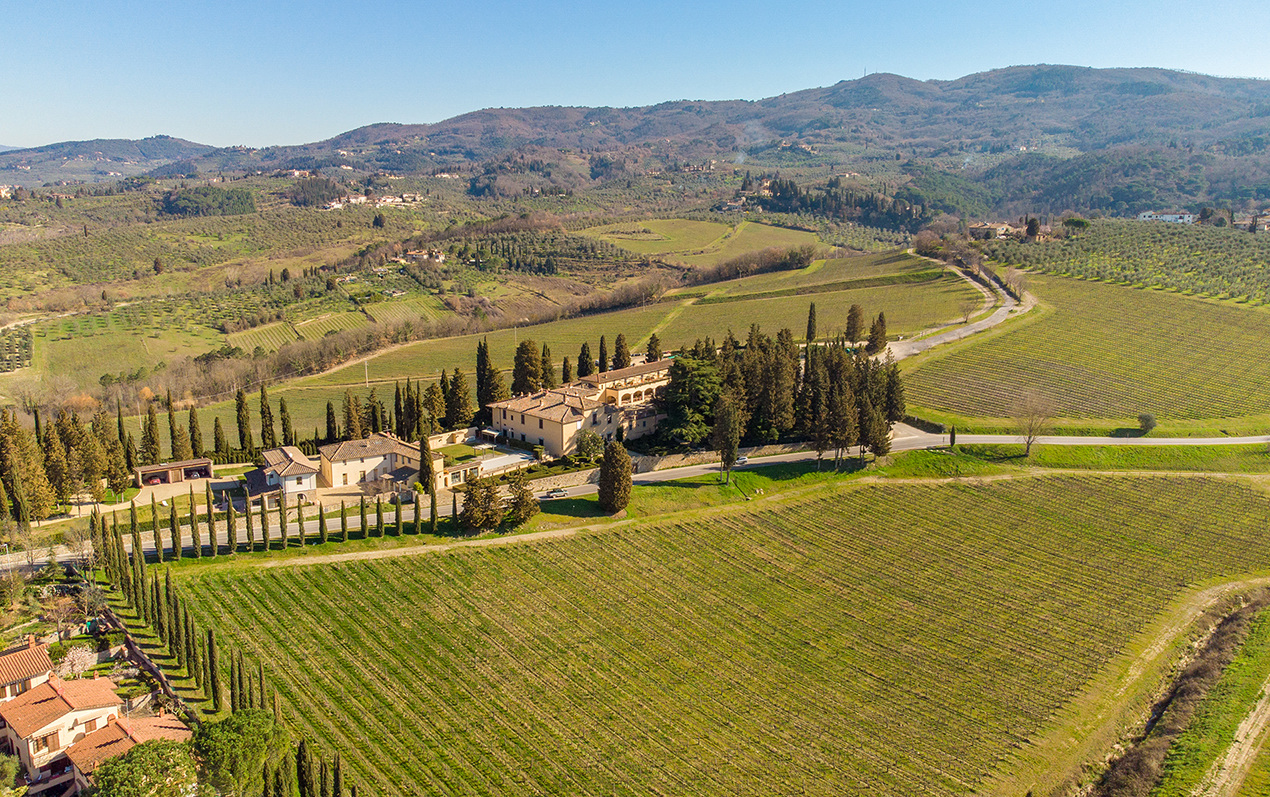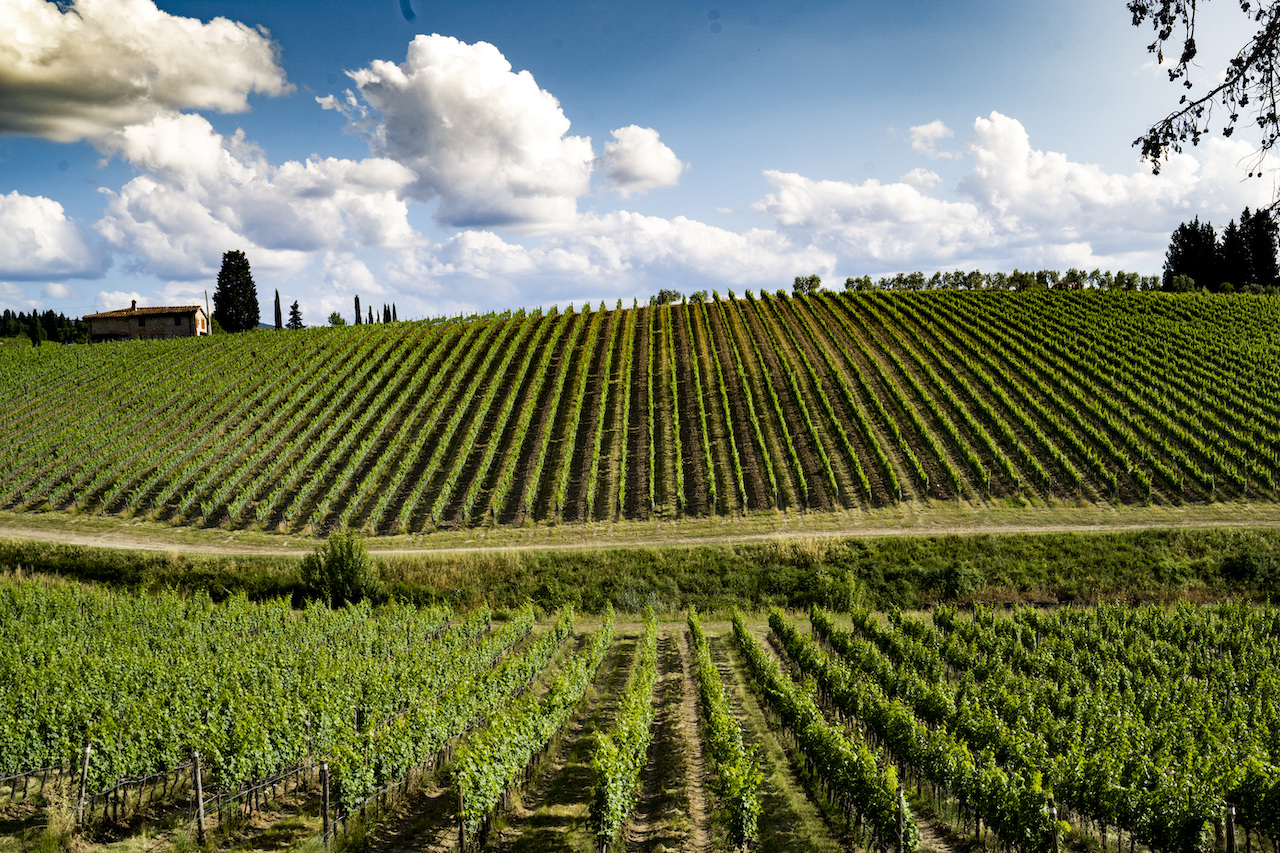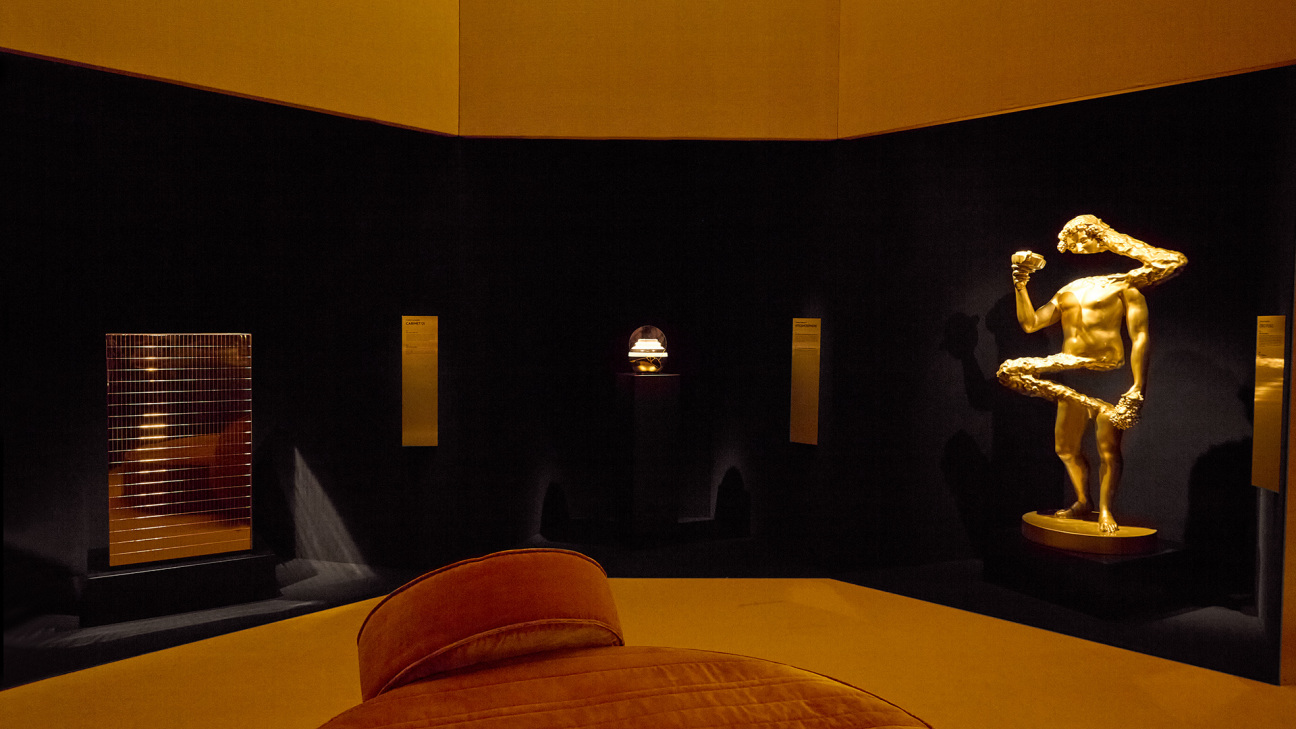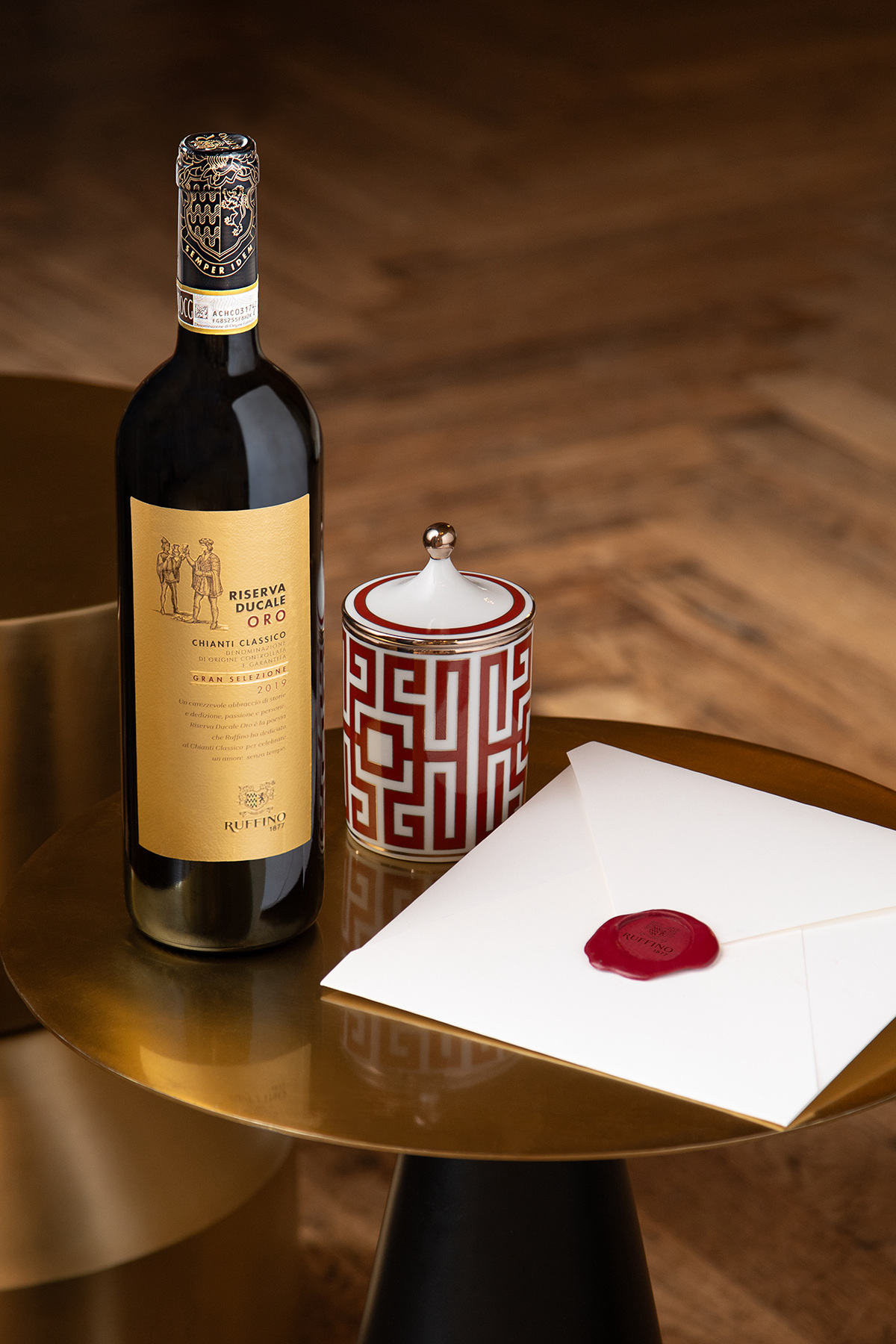
With peak travel season upon us, Tuscany emerges, as always, as the pinnacle of rustic, escapist elegance. But the question of how to navigate such a charming region endures—which Medieval hamlets, and which wineries, best embody the spirit of the land?
Just outside of Florence lies Tenuta Ruffino— a nearly 150-year-old winery. Established in 1877 by two cousins, Ilario and Leopoldo Ruffino, the mission has been the same from the start: to develop what the “ideal wine” by focusing on quality over quantity, which was in opposition to the prevailing approach to winemaking at the time. The imprint of the family business expanded when the Ruffinos made the shrewd decision to begin shipping their wine outside of Tuscany by train and boat, resulting in a new export model for wine that afforded the Ruffino brand visibility and recognition around the world.

Recently, the winery—now with six estates across Tuscany—curated an exhibition that centered this legacy of craftsmanship by highlighting the artistry and skill present in the process of creating a piece of art—or a bottle of wine—demonstrating how deeply intertwined the Italian industries of wine, food, art, and design truly are.

"Six Golden Visions," the exhibition in question, made its debut at Piazza Sempione in Milan as an homage to the brand’s flagship Riserva Ducale Oro wine, which is inspired by the essence of gold and its glittering timelessness. To this end, six unique works were commissioned to represent the union of tradition and innovation at the heart of Ruffino’s processes. In one sweeping space, the exhibition celebrated several pillars of quintessential Italian excellence: design, wine-making, and craftsmanship—a perfect fit for a show taking place during Salone del Mobile.

“It’s not just about the wine, it’s about a representation of Italy: great minds of creation and great minds of design,” said Eva Jeanbart-Lorenzotti, a creative consultant for Ruffino. “There’s a commitment from Ruffino to collaborate with art and design and creativity and innovation to change the concept of food and wine, [which] are different categories but live together.”

Each of the six, internationally-acclaimed artists—Filippo Carandini, Rachel Lee Hovnanian, Chiara Lorenzetti, Ettore Marinelli, Tristano di Robilant and Officine Saffi Lab—were commissioned to make a piece that acknowledged this interconnection. Take, for instance, Hovnanian’s Sirvart Table, which is a tabletop made from Florentine gold and carved from a single piece of Carrara marble inspired by the artist’s interpretation of wine as a powerful tool for connection.

“Having a glass of wine is a very intimate moment with another person,” Hovnanian said. “I looked at that as a wonderful tradition of being able to share something with someone.” The artist’s piece includes a carved candlestick holder, insets to store matchsticks, and a coaster upon which to set down a bottle of wine.
Gabriele Tacconi, chief winemaker at Ruffino, described the delicate, airy Oro wine as being an evolution of Tuscany’s much-beloved, traditional Sangiovese wine (a red wine grape that has been grown in the region since the 16th century). “It’s an evolution, but not [changed].”











 in your life?
in your life?

